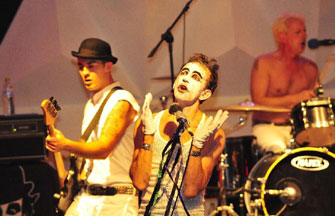Tibetan tongue
( China Daily/Xinhua ) Updated: 2014-03-04 08:00:24Bilingual education
Pu Tsering says he understands youngsters' interest in novelty and their eagerness to catch up with modern life and new technology. "After all, they are living in a world vastly different from the one where their parents and grandparents lived."
When he was a child, Pu Tsering learned to recite long chapters from King Gesar, a classic Tibetan epic. He still remembers vividly the texts from "King of the horse race" and "Saving his wife from hell".

"Such classic pieces are rarely found in children's textbooks nowadays," he says. "Like elsewhere in China, textbooks are more functionally tailored to pass exams."
He often tells his students to speak and read Tibetan as much as possible, fearing the younger generation might one day forget their traditional language and culture in their pursuit of modernity.
The Chinese government encourages bilingual education at schools in Tibet and other ethnic regions. In Tibetan areas, most classes are taught in Tibetan, though Mandarin and English classes are also on the curriculum.
Teachers in Tibetan areas are given on-the-job training to help with their bilingual teaching.
"We have trained more than 35,000 primary and middle school teachers in the province since 2004," says Dong Haifeng, deputy dean of the ethnic teachers' college of Qinghai Normal University.
At least half of these teachers received bilingual training, in Tibetan and Mandarin, he says. The college, which also trains undergraduates to become bilingual teachers at Tibetan schools, instructs most freshman and sophomore classes in Tibetan, says Dong.
|
|
|
|
|
|
|
|





















 Raymond Zhou:
Raymond Zhou: Pauline D Loh:
Pauline D Loh: Hot Pot
Hot Pot Eco China
Eco China China Dream
China Dream China Face
China Face





